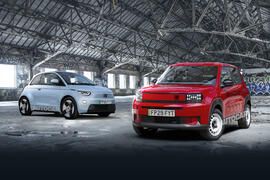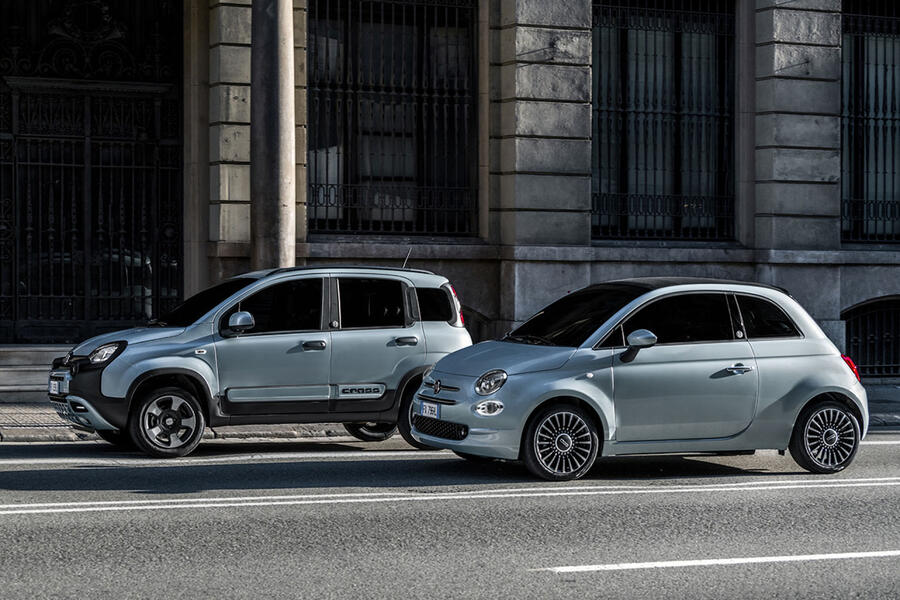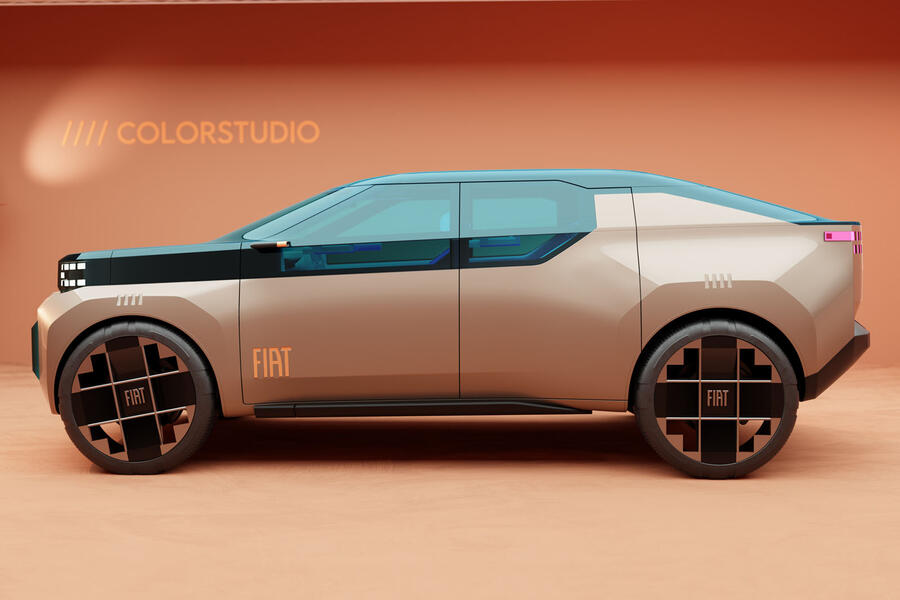
Next-generation Fiat 500 will still be built in Mirafiori; Panda will hark back to the '80s originalLarger SUV, fastback and possible new Punto on the way in next stage of brand's reinvention
Fiat will launch all-new versions of the 500 and Panda as the foundations for a dramatically expanded range that will enable the Italian brand to break out from its recent history as a small car specialist and into larger vehicles over the next five years.
After spending much of the past decade in the doldrums as safety legislation gradually eroded its ageing model range in Europe, Fiat now has a whole host of new models in the works.
The company now has the architectures on which to build new models thanks to the scale offered by being part of the Stellantis group.
In addition, two larger C-segment models, previewed by 2024 concept cars, will join the all-new electric and hybrid versions of the 500 and Panda as well as the recent range additions of the 600 and the Grande Panda. All of these new models have been confirmed for production.
All-new Panda and 500
The Panda and 500 have done the bulk of the heavy lifting for Fiat over most of this century in Europe. But both cars have been allowed to grow old on ageing architectures.
Last year, time was finally called on the 500 Hybrid – as it became known, to differentiate it from the all-electric, mechanically unrelated 500e that was launched in 2020.
The current Panda, now nicknamed ‘Pandina’ by Fiat internally, lives on in some markets and will continue to do so until 2030 courtesy of ongoing updates that will keep it as fresh as possible.
However, replacements for both cars are confirmed and they will each be launched in mild-hybrid and all-electric forms on what is now known as Stellantis’s STLA City architecture.
This was originally launched on the 500e as an EV-only architecture but it is now being reworked to accommodate mild-hybrid drivetrains as well. The 500 Hybrid will return at the end of this year underpinned by this architecture and built alongside the electric model at Fiat’s Mirafiori plant in Italy.

Both electric and hybrid versions of the 500 will be replaced in 2029 and again built in Mirafiori. In 2030, a replacement for the Panda will follow, also with both powertrain options but built at the Pomigliano plant in Italy. STLA City will therefore underpin two Fiat models, each with two different powertrain options, across two factories.
The design of the new 500 will be evolutionary but there will be a bigger change for the Panda, Fiat CEO Olivier François confirmed to Autocar.
“I expect the design of the replacement [Panda] to be a bit closer to the original Panda of the ’80s,” he said. This would also link it more closely with the new Grande Panda. “When you see them next to each other, you will see mama bear and baby bear. It will be really cute. It won’t just be a smaller version of the Grande Panda but it will have visual links, the same roots and the iconic silhouette,” he added.
They will be the last models launched at the end of a product offensive that follows the demise of much of Fiat’s existing range. François said it was “painful” to “have to stop big names” with the likes of the 500X, Tipo and 500 Hybrid retiring due to GSR2 safety regulations that came into force last summer.
“Things were tough but we have come through,” said François.
Fiat goes big

On the eve of the Geneva motor show in February last year, Fiat revealed five new concept cars that preview the expansion of its model range.
Of the five, the City Car concept has become the Grande Panda, while the Pick-up concept previews a replacement for its bestselling global pick-up truck, the Strada. A camper van was also shown.
Of most relevance to Fiat in Europe are the SUV and Fastback concepts, both of which preview new models that are due to be launched by 2027. They are fashioned in the same style as the Grande Panda and are considered part of an extended Panda family. However, they they won’t use the Panda name in production and won’t simply be scaled-up versions of the Grande Panda.
The two new models will be built on the same Smart Car platform as the Grande Panda to facilitate significant cost advantages over rivals. Both hybrid and electric versions are expected to be offered.
The SUV will be a direct rival to the Dacia Bigster and has the best potential for success in Europe.
The production Fastback is an indirect successor to the Tipo as a raised Volkswagen Golf-sized hatchback and is expected by Fiat to do well in global markets - but Europe will still be a focus for the car, given its huge lift in visual appeal over the Tipo.
François said no Fiat will be longer than 4.5m as a “self-limiting” rule imposed by the brand to avoid overlapping with other Stellantis marques, most notably Citroën. “When we go into the C-segment, we will have a totally different attitude that sits right: not better, not worse, but our Italian smile and with our colours on,” he said.
Within Stellantis, François said that even at a global executive level it is asked “if we need all these brands, and all these models for all these brands”. But “we need things to complement each other and we need to complete the puzzle and occupy every space”.
He said that Fiat’s planned move into the lower end of the C-segment is complementary, but were it to go larger and make a car the size of the Citroën C5 Aircross, that would give Stellantis “good synergies” with shared architectures but “poor complements” because the cars would rival each other.
Punto in the wings

François said one of the first things he did when he took over as Fiat CEO in 2011 was to cancel a planned successor to the Punto. “It was okay-looking but not super-iconic,” he said, adding that it only really had a chance of success in Europe, not in Fiat’s other global markets such as South America and Africa.
Instead, he wanted a “car that could be global” and do “huge volumes” and it was utility vehicles and not superminis that had global appeal. Hence the creation of the Grande Panda, a type of raised hatchback/shrunken SUV that had been in François’s head since he cancelled the Punto. But it took the arrival of François Leboine from Renault/Dacia in 2021 to realise the design.
That car became the Grande Panda but François has left the door ajar for a future model more akin to the Punto, should the push for greater efficiency in EVs result in the SUV trend giving way to one where lower hatchbacks thrive again due to their better aerodynamic performance.
François said: “If Punto was very sleek and sporty, it would be hugely linked to the future of electrification.”
Such a car is not planned by Fiat at the moment, but François is ready to respond to any market shift.